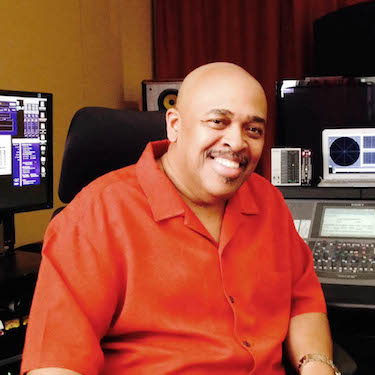|

NEW YORK, NEW YORK: “We’re in the business of correctly preserving a musical vision that occurred at a moment in time,” says legendary mastering engineer Herb Powers, Jr. “Sure, we make it commercial and tweak it up a bit, but really we’re preserving that picture as best we can.” Powers’ philosophy – which is about the soul of the music and not its technicalities – has clearly worked for him: the veteran mastering engineer has earned numerous Grammy Awards and nominations and innumerable Platinum- and Gold-certified albums. His list of clients includes Mariah Carey, Alicia Keys, Justin Timberlake, Usher, Nelly, Missy Elliott, Lauryn Hill, Salt-N-Pepa, Run DMC, Afrika Bambaataa, Outkast, Toni Braxton, Babyface, Puff Daddy, Jennifer Lopez, Pink, and countless others. Among Powers’ trusted tools are Metric Halo SpectraFoo sound analysis software, a Metric Halo ULN-2 A/D/A interface, and, more recently, Metric Halo plug-ins.
For decades, his father, Herb Powers, Sr., worked for CBS as a quality control engineer in the company’s Manhattan studios, which gave the younger Powers an insider’s view of the business. Indeed, Powers remembers attending a session with his father for Sly and the Family Stone. Apart from a signed record, Powers came away with rare insight into the production of recorded music. When he was DJ’ing years later, Powers tapped that insight to give shape to the dissatisfaction he felt: “Most of the records I spun didn’t sound that good,” he said. “I was inspired to do something about it!” Following his father’s advice, Powers secured a position at NYC’s famous Frankford/Wayne in 1977… literally in the mailroom. True to the cliché, he worked his way up to eventually command his own mastering room. When Frankford/Wayne folded, he moved to The Hit Factory. Since it closed its doors in 2005, Powers has been working under his own flag, Powers Mastering Studio.
“I have Metric Halo SpectraFoo in front of me every minute of my work day,” said Powers. “I used to have a nice hardware metering system, but it eventually died. I looked into replacing it with another hardware system, but I also explored my software options. SpectraFoo looked good, and when I realized I could get SpectraFoo along with a dedicated 11-inch Apple MacBook Air for less than the cost of another hardware system, I went for it. Of course, I still ultimately rely on my ears, but I constantly reference SpectraFoo’s RTA and stereoscope. I have my tools selected and organized, and the MacBook Air’s only function is to run SpectraFoo. For less than the price of a hardware analyzer, I got better tools, better real estate, and a perfectly customized experience.”
Powers’ setup is an amalgam of workflows that reflects his decades in the business. Apart from a Studer tape machine, a DAT player, and other now-seldom-used playback devices, he maintains a playback computer loaded with every conceivable music production software. Signal from that computer enters the analog domain via a dedicated Apogee DA, where it then winds its way through Powers’ trusted collection of analog equalizers, filters, and dynamics processors. He uses his Metric Halo ULN-2 to capture signal in front of the processing for comparison in SpectraFoo and, more critically, as the AD converter in front of his dedicated record computer, which runs Sonic Studio SoundBlade mastering software. “I have a lot of nice analog gear, and I’m super comfortable using it,” he said. “As soon as I hear something in the music, I know which knob to turn. Because I always go analog, good conversion is important, and the Metric Halo ULN-2 sounds totally transparent. It works solidly even at 24bit/96kHz.”
Despite Powers’ reliance on analog gear, he’s happy to incorporate more plug-ins, and sound quality and well-constructed factory presets have made Metric Halo’s line of plug-ins a growing favorite. “A lot of times I’ll hear an issue that stands apart from the usual balancing that I use my analog gear for,” he said. “I use Metric Halo TransientControl, ChannelStrip, and Multiband Dynamics to correct it in the playback machine. Then I can go out of the playback machine and make the usual sorts of corrections I make with the hardware. The Metric Halo plug-ins sound great and they’re very fast to use. I can always pull up a factory preset that gets me most of the way there. I just have to adjust a ratio or a threshold and it’s good. Since everything these days is on a tight deadline, that speed is important!”
As a professional who has spent nearly four decades making music sound fantastic, Powers laments the industry shift towards compressed audio formats and its growing tolerance of clipping and distortion in the pursuit of volume. Nevertheless, he holds out hope that bandwidth will eventually allow consumers to enjoy the full fidelity of his work as he hears it in his studio. |